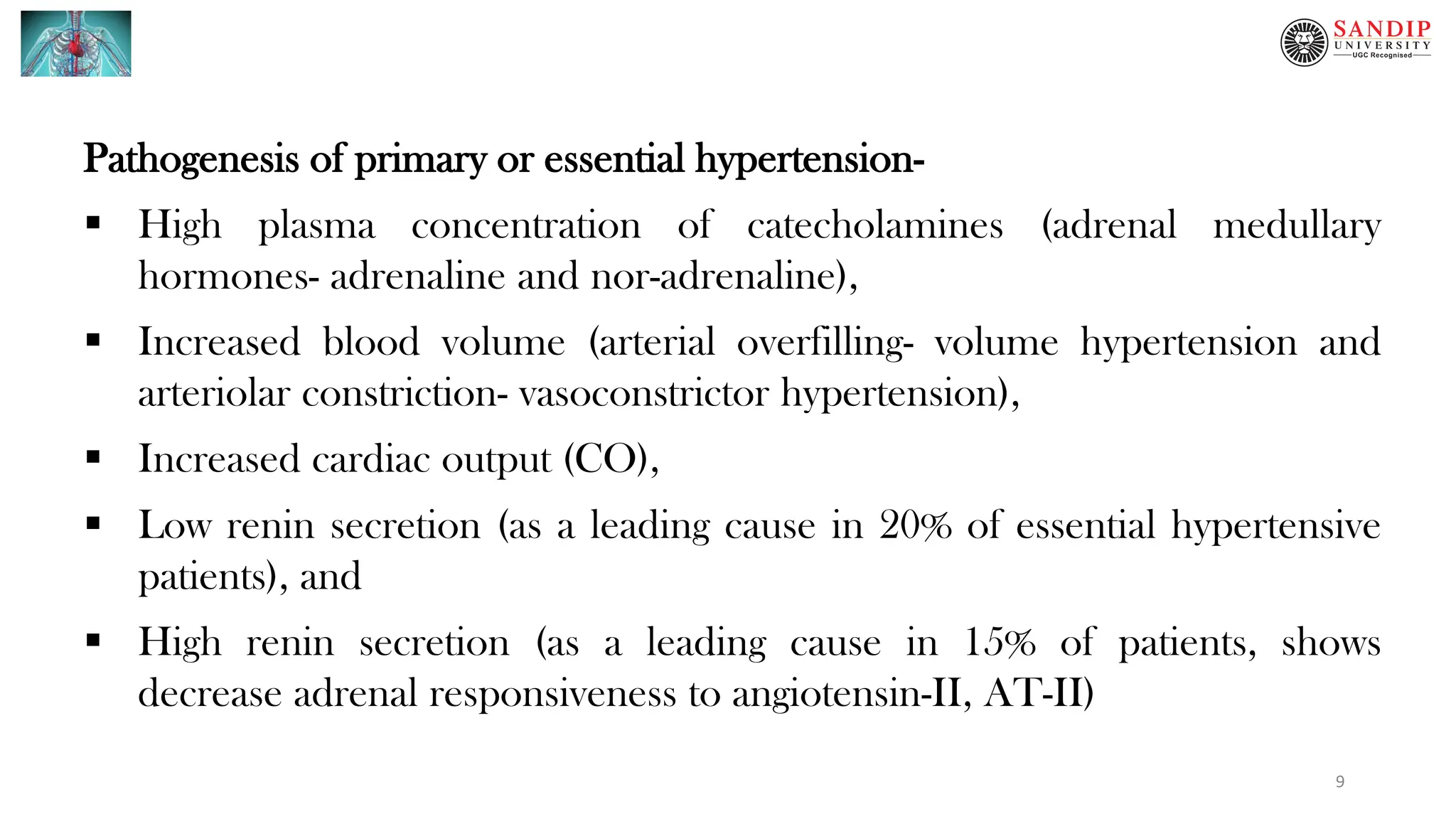This document summarizes cardiovascular pathophysiology related to hypertension. It defines hypertension and provides a clinical classification system. It describes the etiology and pathogenesis of both primary (essential) and secondary hypertension. For primary hypertension, it discusses genetic and environmental risk factors and the role of the renin-angiotensin-aldosterone system. For secondary hypertension, it covers renal, endocrine, neurogenic and other causes. It also outlines the pathological changes that can occur in the heart, blood vessels and kidneys as well as the clinical features of primary versus secondary hypertension.






















